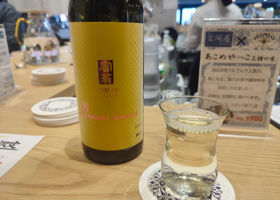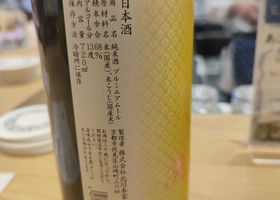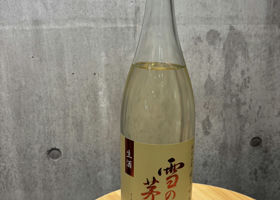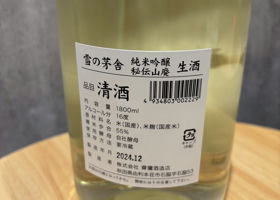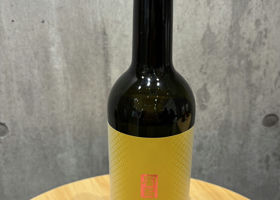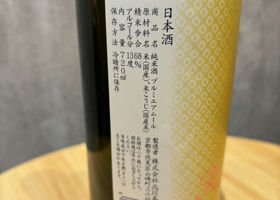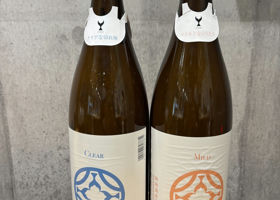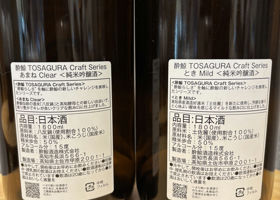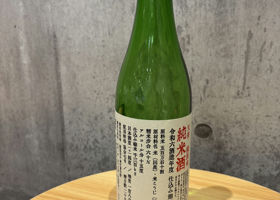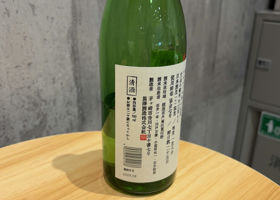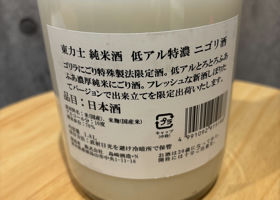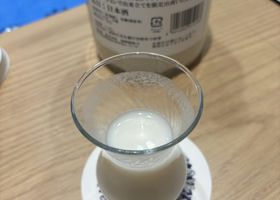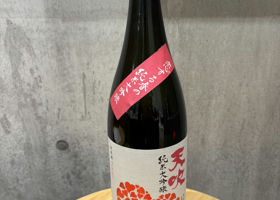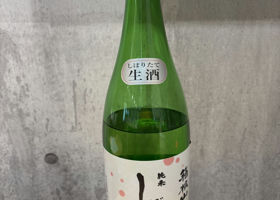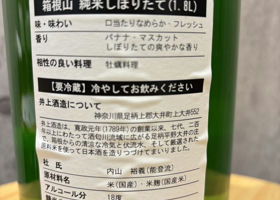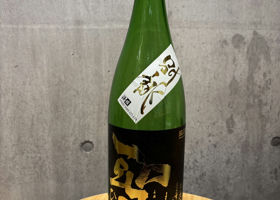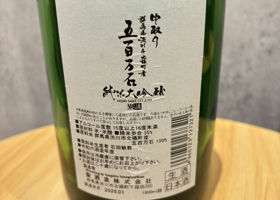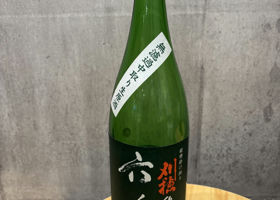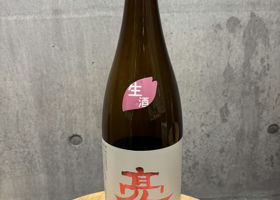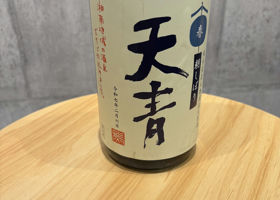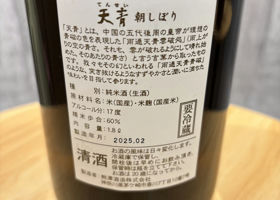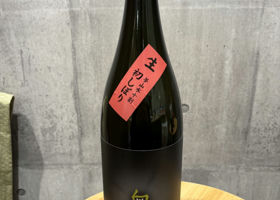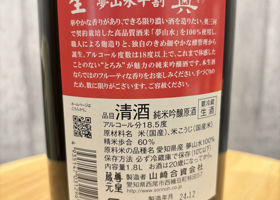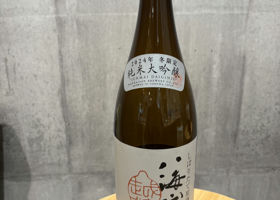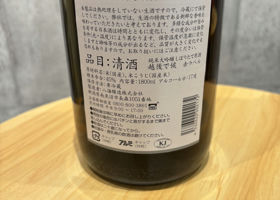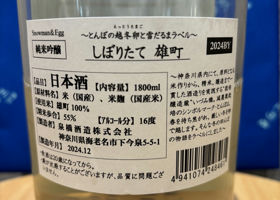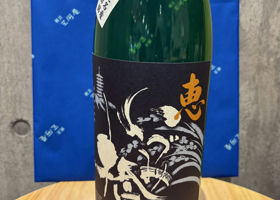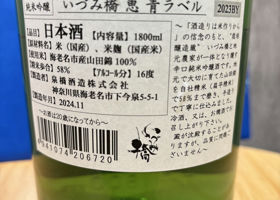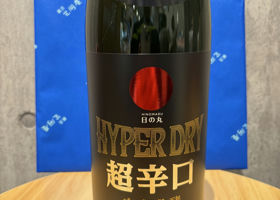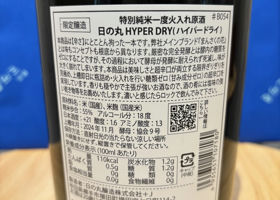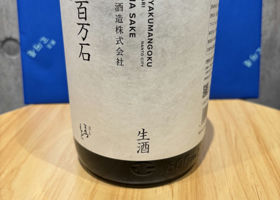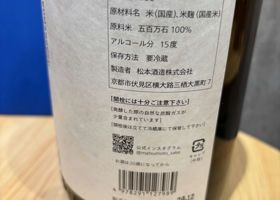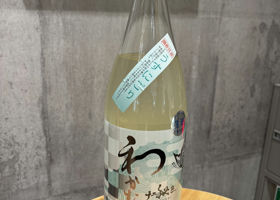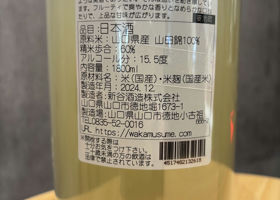Timeline
這松It has a soft and smooth mouthfeel with a dry and tangy taste. 這松First love.
Sweet and sour. 越の酒好きHow many cups today?
After so many tastings at Kitagawa Honke in Kyoto, how many cups? I don't count anymore.
The last one was a sake from Akita!
It has a rather firm texture and aroma of plums.
The sweetness is very strong and tasty, just like Akita sake!
The end of the day was filled with a full body! 越の酒好きToday's third drink?
The Kitagawa Honke in Kyoto started their immediate sales today! Due to the snow, it was delayed by a day, and we were able to get the sake in today just in time: ☺️
Sake is a little bit firm on the tongue.
Sweet plum aroma.
After the gentle sweetness goes around the palate, the acidity comes in gently. Sweetness prevails.
Gentle sweetness comes with plum aroma.
The mellow sweet and sour taste is pleasant, just like first love, which is the meaning of the name "Premiere Amour". 越の酒好きThe second drink of the day? A challenging sake from Kochi's Drunken Whale!
The label is a bit different from the usual drunken whale.
But if you look closely, you can see a whale's tail.
First, the Amane.
A combination of Hachitan-Nishiki and Kochi yeast, it is a clear type.
It is indeed clear and aromatic. It is indeed clear and fragrant, with a strong sweetness, like a beautiful Junmai Daiginjo!
Next, Toki.
A mild type made with Tosa Rei, Kochi's preferred rice for sake brewing.
The aroma was a little complex, and the sweetness was moderate, but the acidity was strong.
Both have a polishing ratio of 50%, which is in the daiginjo class, but the difference in the rice makes for a very different flavor.
Both have the clear, umami flavor that is typical of drunken whales, but with a new challenge! 越の酒好きToday's first drink!
Sake made only with rice from Kanagawa
Light and clear on the tongue.
The aroma of green apple is amazing!
Light sweetness and beautiful acidity.
Light sweetness and beautiful acidity.
You can taste the good points of Association No. 7 and Gohyakumangoku.
I am impressed that they are making Gohyaku-mangoku even in Kanagawa! 越の酒好きThe third drink is a sweet nigori sake.
The label is two two gori~.
The first was a sweet sake with a thick, drawn, pure white color with grains of rice still in it.
Anyway, it is sweet, but there is also a hint of sourness behind the sweetness.
It is sweet anyway, but with a hint of sourness in the back.
When heated, it is a delicious amazake. The mouth is full of rice!
It's sweet, but also has a sourness that makes it go down a treat. 越の酒好きThe second drink of the day is also freshly squeezed Saga sake.
It has a firm texture on the tongue.
Nutty aroma.
Relatively clear, with a sweet taste, but the acidity and astringency are predominant and the flavor is rather complex.
Alcoholic taste.
The use of floral yeast gives it a unique taste, with acidity and astringency predominating over aroma and sweetness. 越の酒好きToday's first drink is a sake from Kanagawa.
It has a rather firm texture, clear and thick.
The banana-like, refreshing aroma tickles the nostrils.
The sweetness and sourness are quite strong.
It was a refreshing, aromatic, and delicious sake, different from the usual Hakonezan. Hijiri純米大吟醸 中取り 五百万石純米大吟醸中取り無濾過 越の酒好きThe third drink of the day is also a tasty mid-range!
The first one has a firm texture on the tongue.
The aroma is different from the previous Kariho, very beautiful, soft and elegant, and tickles the nostrils.
The sweetness is quite good, and the sourness comes later, but the sweetness prevails.
Polishing ratio 35
The flavor is typical of Junmai Daiginjo made from well polished Gohyakumangoku rice.
The sweetness is blissful with just the right amount of acidity. 越の酒好きToday's second drink is a sake with a robust umami flavor, as is typical of Akita sake.
It is bottled only in the middle, which we think tastes better than Arahashiri.
It has a firm texture and an elegant ginjo aroma.
It has a good acidity, but a beautiful sweetness dominates the whole taste.
It has a strong umami taste, as is typical of Akita sake.
Only the best part of the middle distillate is used, so even the junmai ginjo is very mellow, aromatic, and delicious. 越の酒好きToday's first drink is one that feels like spring!
The aroma is full, almost melon-like, with a distinctive fragrance.
Moderately sweet with moderate acidity, but sweetness prevails.
This is a cup that can only be drunk at this time of the year, and when you drink it, you will feel spring coming!
The unique aroma of this brewed with Kawazu cherry yeast makes you feel spring.
The flavor is well balanced between umami and sourness, and is delicious. Tensei朝しぼり 純米直汲み無濾過生原酒純米原酒生酒無濾過 越の酒好きThird drink yesterday!
It was squeezed on the morning of February 6, bottled as is, and arrived at the store at noon on the same day.
We had the first glass that was opened immediately upon arrival.
Compared to the January morning pressing, the taste is lighter and relatively crisp.
The fresh and refreshing taste was impressive, like a light hearted person who is starting everything cleanly from scratch for the coming spring season.
Slightly carbonated and lightly cloudy. Light on the tongue.
Slightly green apple aroma.
Light sweetness, firm acidity and astringency.
Light sweetness, firm acidity, and astringency.
Freshly squeezed, slightly carbonated.
Lighter taste than expected. Relatively crisp, the same feeling as the light heartedness of the coming spring. 奥夢山水十割 生初しぼり 純米吟醸原酒純米吟醸原酒 越の酒好きFirm texture. Slightly carbonated
Green apple aroma, a little bit of thick sweetness, but sourness and astringency are predominant.
The alcohol content is 18%, so you will feel intoxicated before you know it.
It is still very strong. From the first touch on the tongue, there is a sense of heaviness.
It has a deep and robust flavor with a little bit of the thickening of the original sake. 越の酒好きIt has been quite busy since the beginning of this year, and I finally checked in for the first time this year.
The texture is light, as is typical of Hakkaisan.
The aroma is more gorgeous than usual Hakkaisan. Slightly sweet, but easy to drink with just the right amount of acidity.
Polishing ratio 45%, alcohol 17
For a Hakkaisan, it has a gorgeous aroma, sweet and sour, yet light on the tongue, and can be enjoyed as much as you like. 越の酒好きLight and dry
Relatively light on the tongue. The aroma is mild.
Moderate sweetness is followed by a firm acidity. Sourness predominates.
The aftertaste is sharp and clean with acidity.
100% Omachi with a polishing ratio of 55%, polished to the level of a daiginjo, has a beautiful taste.
This is what you get when Izumihashi brews Omachi. It is a little acidity-driven with a clean taste. 越の酒好きRelatively light on the tongue.
After the slightest hint of light sweetness, the acidity soon arrives. Sourness predominates.
Little alcohol in the aftertaste
Light taste.
Light taste with a little acidity typical of Izumihashi. 越の酒好きThe second for today
Heavy on the tongue. The aroma of rice is similar to that of shochu.
The sweetness is similar to that of Kou shochu, but there is a certain amount of acidity.
The aftertaste is a bit bitter.
Alcohol 18, Sake meter value +21
The specs are super-dry!
It is indeed fully fermented and DRY, but it has a solid umami base, so you feel like you are drinking shochu as it is. 越の酒好きThe first for today
Light texture. Slight carbonation. Very fruity melon aroma.
Light sweetness and a little acidity. Not much astringency.
The aroma is elegant, and the aroma of Gohyakumangoku is very pleasant. 越の酒好きForgot to raise the third
Firm texture. Slightly carbonated.
Aroma: Fresh and fruity with a hint of sweetness like wasanbon.
It is quite sweet, but the acidity is also strong. The slightly carbonated and tingling sensation is only possible when the mouth is open.
The aftertaste is alcoholic.
Rice polishing ratio 60, alcohol 15.5, 100% Yamadanishiki
This is a freshly made new sake. This is also a new sake.
Slightly carbonated.
It has a sourness that does not lose to the sweetness and is very drinkable, but it is also delicious. RecommendedContentsSectionView.title
